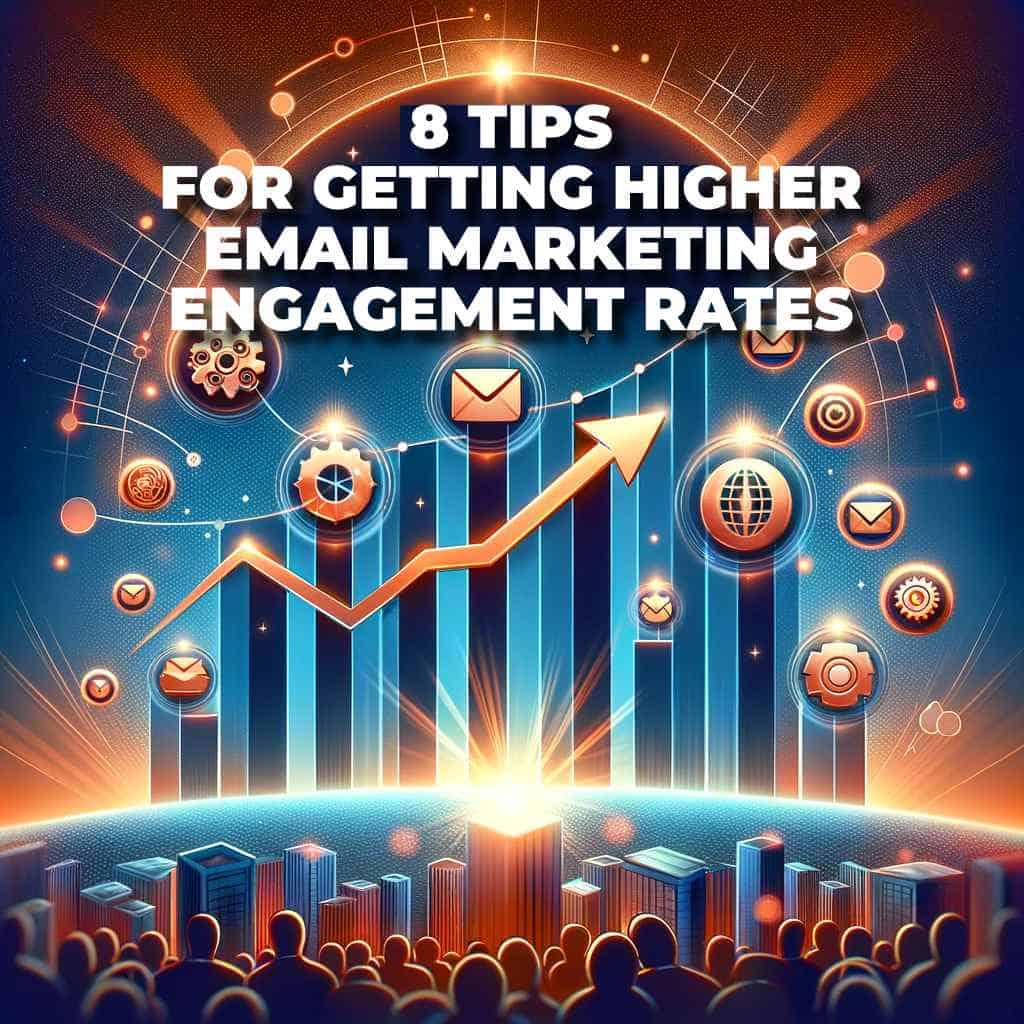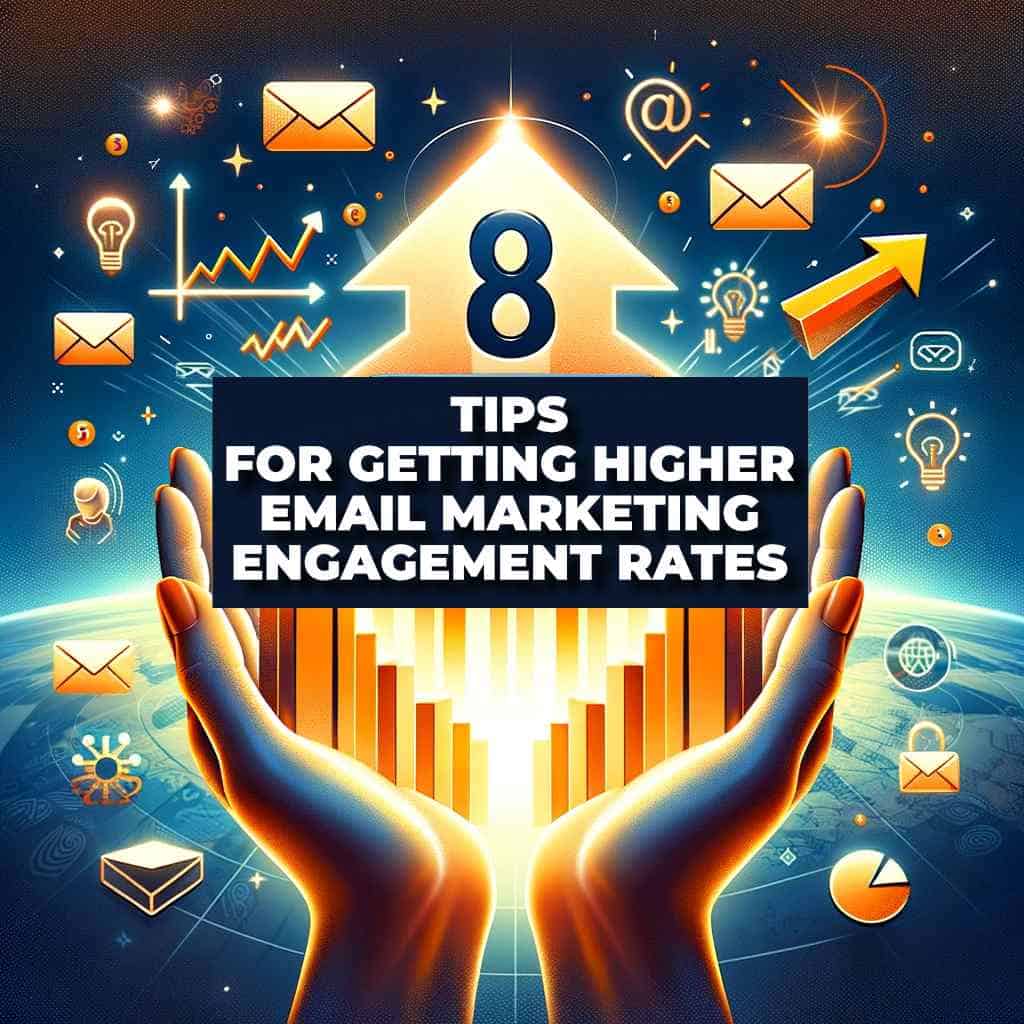Email marketing engagement rates have been a cornerstone of digital marketing strategies. Its not just in its broad reach – with billions of users worldwide – but in its incredible return on investment. Studies have shown businesses can expect an average return of £36 for every pound spent on email marketing.
This high ROI is attributed to email communication’s direct and personal nature, allowing businesses to connect with their audience in a less congested space than social media platforms. And email marketing provides a unique opportunity for businesses to own their communication channel, free from the algorithm changes and policy updates that frequently occur on social media platforms.
Moreover, email marketing’s versatility makes it a suitable tool for various objectives – from nurturing leads to boosting sales, announcing new products, and maintaining customer relationships.
Unlike many other marketing channels, email allows for detailed segmentation and personalisation, which are increasingly important in a market where consumers expect tailored content. Email marketing can help businesses reach a broad audience while creating a deeper connection with their customers, encouraging loyalty and repeat business.
Understanding Your Audience
Segmenting Your Audience
An email marketing campaign’s results often hinge on how well you understand and segment your audience.
When you divide your email list into different segments based on demographics (age, gender, location), behaviours (purchase history, website activity), and psychographics (interests, values), you can send more targeted content.
This increases the chances of your emails resonating with each segment, enhancing email marketing engagement rates. For instance, sending product recommendations based on previous purchases can make your emails more relevant and appealing to each recipient.
Moreover, audience segmentation allows for more efficient use of marketing resources. By targeting specific groups, you can avoid the one-size-fits-all approach, which often leads to lower engagement rates.
Segmented emails drive up to a 760% increase in revenue because they cater to specific needs and interests. This personalised approach improves open and click-through rates and strengthens the relationship between your brand and your audience, ultimately driving loyalty and repeat purchases.
Importance of Personalization
Personalisation in email marketing goes far beyond addressing the recipient by their first name. It involves tailoring your emails’ content to meet each subscriber’s needs and preferences.
Personalisation can include sending birthday discounts, personalised product recommendations, or content based on their browsing behaviour. Personalised emails demonstrate to your subscribers that you understand and value their unique preferences, fostering a deeper connection.
Personalised emails stand out way more in a crowded inbox. Also, they are more likely to be opened and acted upon because they resonate more with the recipient. Emails with personalised subject lines are 26% more likely to be opened and also give higher email marketing engagement rates.
This level of detail shows your audience that they are not just another number in your database but valued customers with specific interests and needs. Personalisation can turn a generic marketing tool into a robust customer engagement and retention conduit.

Crafting Effective Email Content
Engaging and interactive content is essential in keeping your subscribers interested and invested in your emails. Incorporating elements such as interactive quizzes, polls, or even simple animations can significantly enhance the engagement level of your emails.
These elements encourage active participation from the recipients, making the email experience more enjoyable and memorable. Additionally, such interactive content can provide valuable insights into your audience’s preferences and behaviours, which can be used to refine your marketing strategies.
Beyond interactive elements, the overall quality of the content in your emails is critical. This means providing value through well-written, informative, or entertaining content that goes beyond just selling a product or service.
For instance, a newsletter from a culinary business could include recipes, cooking tips, and the latest culinary trends, along with product recommendations or special offers. Balancing promotional content with valuable information can keep your audience engaged and looking forward to your following email.
Optimising Email Design
The design of your email plays a significant role in how it is perceived and engaged with by your audience. An email that is too wide may require horizontal scrolling, especially on mobile devices, which can be off-putting for the reader.
Keeping your email width within 500-650 pixels ensures it is easily viewable on desktop and mobile screens without scrolling. This improves the user experience and increases the likelihood of higher email marketing engagement rates.
Including your brand’s logo is another crucial aspect of email design. A recognisable logo helps in building trust and brand recognition. It reassures the recipient that the email is from a legitimate and credible source, reducing the likelihood of being marked as spam.
Furthermore, a consistent visual identity across all your emails strengthens your brand image. It makes your emails instantly recognisable to your audience, thus increasing the chances of your email being opened and read.
Subject Lines and Open Rates
The subject line of your email is your first impression and plays a pivotal role in whether your email gets opened or ignored. A compelling subject line acts like a headline, enticing the recipient to open the email to discover more.
The best subject lines create curiosity, offer value, evoke emotion, and are concise. Ideally, keeping your subject line between 35 and 45 characters ensures it is readable on mobile devices without getting cut off. A well-crafted subject line can significantly boost your email’s open rates, directly impacting the overall success of your email marketing campaign.
Experimenting with different types of subject lines is also beneficial. This could include posing a question, creating a sense of urgency, or using humour, depending on your brand voice and audience’s preferences.
It’s essential to keep testing different approaches to understand what resonates best with your audience. Remember, the goal of the subject line is to make the recipient curious enough to open the email without resorting to misleading or clickbait tactics that could harm your brand’s credibility in the long run.

Email Marketing Engagement Rates With Offers
Incorporating offers such as coupon codes in your emails is a proven method for higher email marketing engagement rates. Everyone loves a good deal; when presented correctly, discounts and special offers can motivate recipients to purchase.
However, it’s essential to use these sparingly and strategically. Refrain from using discounts to devalue your products or services and condition customers to wait for deals rather than buying at regular prices. Key moments to include offers are around special events or holidays or as part of a welcome email to new subscribers.
Customer testimonials in emails serve as powerful social proof, building trust and credibility for your brand. They illustrate the real-life benefits of your products or services through the eyes of satisfied customers.
Including positive reviews or user-generated content in your emails can influence potential customers’ purchasing decisions, as people often rely on the opinions of others when making their own choices. This strategy not only showcases your product in action but also connects your audience with the experiences of others, making your brand more relatable and trustworthy.
Timing and Frequency of Emails
Finding the right balance in the timing and frequency of your email campaigns is crucial for maintaining subscriber interest without overwhelming them. There is no universal rule for the best time to send emails, as it varies based on factors such as your audience’s demographics, behaviour, and industry norms.
Regular testing and analysis of performance metrics are essential to identify the most effective time slots that lead to higher open and engagement rates. This experimentation allows you to adapt your strategy to the preferences and habits of your audience, ensuring that your emails are welcomed rather than seen as a nuisance.
Furthermore, the frequency of your emails plays a significant role in maintaining subscriber engagement. Bombarding your audience with too many emails can lead to fatigue and unsubscribes while sending too few can make your brand forgettable.
This balance is influenced by factors such as the nature of your business, the type of content you’re sending, and your audience’s expectations. For example, a daily deals website might send daily emails, while a luxury brand might opt for a more spaced-out communication strategy.
Monitoring open rates, click-through rates, and, unsubscribe rates and email marketing engagement rates can provide insights into how your audience responds to your email frequency, enabling you to adjust accordingly.
Leveraging Transactional Emails
Transactional emails, such as order confirmations, shipping notifications, and password resets, represent a significant opportunity for engagement that needs to be more utilised. These emails typically have high email marketing engagement rates because they contain essential information for the customer.
Therefore, they offer an excellent opportunity to engage further by including additional content such as related products, customer surveys, or loyalty program information. This approach can enhance the customer experience and drive other sales without appearing overly promotional.
Moreover, transactional emails can reinforce your brand identity and values. Including personalised messages, consistent branding, and a tone that matches your overall marketing strategy can leave a lasting impression on the customer.
This attention to detail in transactional emails can significantly contribute to building a positive and lasting relationship with your customers, encouraging repeat business and customer loyalty.
Testing and Optimisation
A/B testing is an invaluable tool in optimising your email marketing campaigns and email marketing engagement rates. You can identify what resonates best with your audience by systematically testing different elements of your emails, such as subject lines, email copy, layouts, images, and calls to action.
This data-driven approach allows you to continually refine and improve your email marketing strategy, leading to higher engagement and conversion rates. Testing one variable at a time is essential to understand its impact and make informed decisions based on the results.
In addition to A/B testing, regular analysis of your email campaign’s performance is crucial. Metrics such as open rates, click-through rates, conversion rates, and unsubscribe rates offer valuable insights into how your audience interacts with your emails.
This ongoing analysis helps understand what works and doesn’t and identifies trends and shifts in subscriber behaviour over time. By staying attuned to these metrics, you can adapt your strategy to ensure your email marketing remains practical and relevant to your audience.
Conclusion and Key Takeaways
In summary, successful email marketing is a blend of understanding your audience, creating engaging and relevant content, optimising design and timing, and continuously refining your approach through testing and analysis.
The key to boosting email marketing engagement rates lies in personalisation, strategic use of offers, and respecting your audience’s preferences in terms of content and frequency. By implementing these strategies, businesses can use email marketing to capture attention and build lasting customer relationships, driving loyalty and repeat business.
Remember, the digital landscape is ever-evolving, and so should your email marketing strategies. Staying flexible, innovative, and responsive to your audience’s needs will help you maintain an effective and impactful email marketing program.
